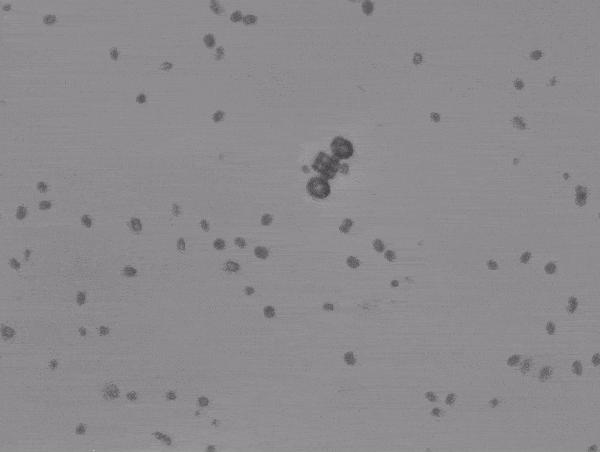From ox-drawn plows to horse-drawn carts to sled dogs, humanity has relied on animal power to perform a variety of tasks for thousands of years.
A team of Japanese researchers from the University of Tokyo has just reinvented the concept on a whole new scale by creating a series of small devices designed to be set in motion by… Algae.
High-performance bio-engines
This work is based entirely on Chlamydomonas reinhardtiia microscopic algae abundant in freshwater bodies all over the planet. It has a real little motor quite similar to the one that allows spermatozoa to move forward.
Its hindquarters are equipped with two flagella, whip-like appendages made up of small tubules. When light hits a photosensitive structure, these tubules begin to slide relative to each other under the influence of motor proteins, dyneins; this produces a synchronized movement that looks a bit like the breaststroke, allowing the algae to move at about 100 micrometers per second. Scaled down, this would be almost twice as fast as a professional sprinter!
Micromachines powered by algae
It is this remarkably efficient machinery that the researchers exploited in their work. Using stereolithography, a 3D printing technique that can achieve very high levels of precision, they began by creating small baskets of a few micrometers. The size and structure of these were specifically calibrated to trap these small algae without damaging them. At the back of the device, they left an orifice just large enough to allow the flagella to move freely.
After testing the ability of these microscopic traps to capture algae, the authors of this work attached them to two different structures. The first, nicknamed ” scooter “, is designed to hold two algae side by side so that they can pull a small basket, a bit like a carriage pulled by two horses. The second, called ” rotator “, this time traps four algae around an axis to form a sort of self-propelled propeller.
In both cases, the tests proved very encouraging, particularly for the rotator. Once the four nacelles were occupied by algae, it began to rotate around its axis fluidly, like a small miniature gear. The scooteron the other hand, was more capricious. The authors expected it to move in a straight line; instead, it moved much more erratically, performing a series of somersaults.

But this unexpected behavior did not disappoint the team, quite the contrary. They deduced that a simple pair of algae could allow a micromachine to perform complex movements, which could prove quite interesting when considering real practical applications.
A tool in environmental sciences?
Because even if it is only a proof of concept for the moment, this work could still have concrete repercussions in environmental sciences. The researchers estimate that once enhanced with a few passive sensors, micromachines of this type could extract heaps of data from an aquatic environment, completely autonomously and without using problematic components such as batteries.
Their paper even hints at micromachines capable of capturing soluble pollutants that threaten this type of ecosystem. If necessary, an armada of small devices powered by microorganisms could purify a pond or a lake, for example.
To get there, however, it will be necessary to develop much more complex structures, probably composed of several distinct elements. It will therefore be interesting to follow this rather exotic engineering exercise to see if anyone will succeed in exploiting it in a relevant way.
The text of the study is available ici.
Source: www.journaldugeek.com


